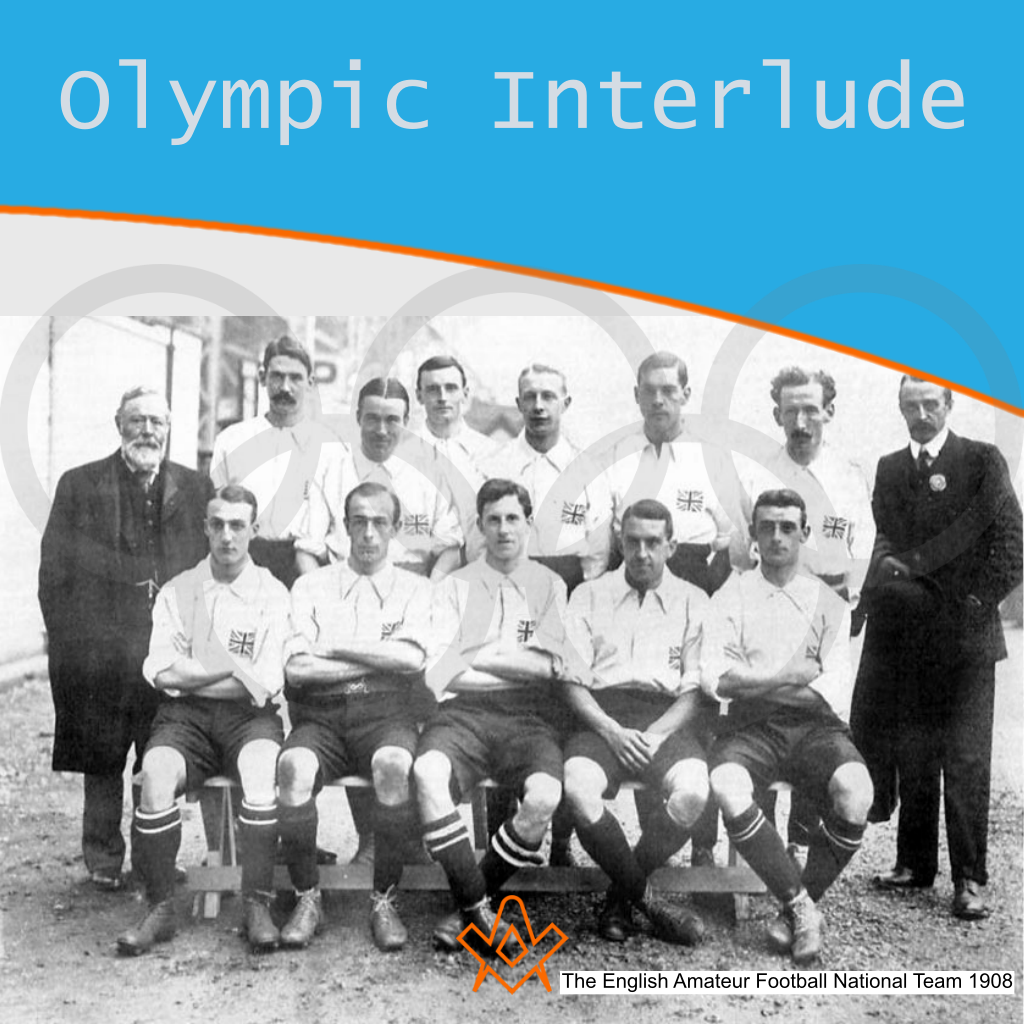Amateur, as were all sportsmen at the end of the 1800s and into the early 1900s.
Their pinnacle being the ‘modern’ Olympics, held three times in Great Britain, although in those early days they would have been England inclusive of Ireland.
The three occasions being, London, 1908, 1948, and latterly 2012, being Great Britain and Northern Ireland.
Paul Gardner reflects on those days of yore and the “gentleman footballer” in Masonry.
Feature image: The English Amateur Football National Team that won the 1908 Olympic Games gold medal.
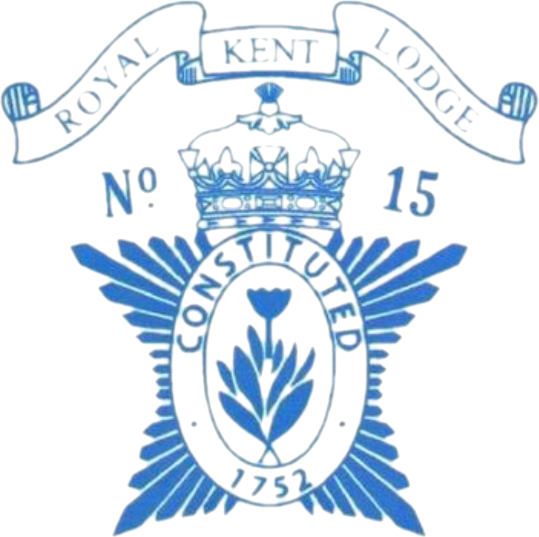
Kent Lodge No.15, an Antient’s Lodge,
featured several ‘Olympians’ in its long history – below are some notable members.

Sir Henry George Norris (1865 – 1934) Kent Lodge No 15, London, Initiated 1894, WM 1902 & 1909
Lived with parents, John Henry, warehouseman, and Georgina Sarah Norris, at 234 Blackfriars Road, Lambeth, in 1881.
Later known as an auctioneer and builder, living at Sirron Lodge, Alton Road, Roehampton. Married Edith Anne Featherstone in 1901, raised daughters Mary Joy and Margaret Audrey, died at Barnes aged 69.
At initiation, he was living at 70 Union Grove, Wandsworth Common, Clapham, solicitor’s articled clerk. Married.
Chairman of Arsenal Football Club 1912 – 1927, all other directors were also Freemasons and members of Kent Lodge. Moved club from Woolwich Arsenal to Highbury in 1913, also owned Fulham and Croydon Common Football Clubs.
Mayor of Fulham during inter-war period. Presented Kent Lodge No. 15 with a banner in October 1917 (Since lost).
Craft: AG Swd Bearer, 1917; PJGD, 1926,
Royal Arch; PDGSwdBearer, 1917; PGD, 1926;
Royal Arch: PDGSwdBearer, 1917; PAG Soj, 1926;
London Grand Rank, 1911.
Image Linked: arsenalarsenal.net
John Edward Norris (1865 – 1946) Kent Lodge No 15, London, Initiated 1909, WM 1935
Younger brother of Henry Norris. (q.v.) Club Secretary at Fulham Football Club 1906 – c.1913; worked in accounts department of Arsenal Football Club but unclear whether he remained after his brother left in July 1927.
William Gilbert Allen (1869 – 1931) Kent Lodge No 15, London, Initiated 1899, WM 1928
Business partner of Henry Norris at Arsenal football club. All Allen’s sons were Freemasons, initiated in Kent Lodge 10 March 1920, and all were WM at various times. He was a director of Fulham Football Club.

Vivian John Woodward (1879 – 1954) Kent Lodge, No. 15, London, Initiated 1912.
Born in Kennington, Surrey, Woodward was the seventh child of John, a successful architect and Freeman of the City of London, and Anna Woodward. Woodward became an amateur player at Chelsea (Vivian Woodward is second from the right, front row) and Tottenham Hotspur Football Clubs, epitomising the conflict between amateurism and professionalism, as football developed as a sport in England.
He held or co-held the overall England goal scoring record for 47 years – longer than any other player.
He captained the Great Britain team which won the gold medal at the 1908 Olympics, beating Denmark in the final before 8,000 spectators, and scored the second of two goals.
During World War I, he served as a captain in the 17th Battalion of the Middlesex Regiment, known as a “Footballers Battalion”, which included many members of Woodward’s former team, Tottenham Hotspur.
A resident of Clacton, Essex, Woodward worked as an architect with his father and later designed the Antwerp stadium for the 1920 Olympics.
Four years after his Olympic success, he was initiated in Kent Lodge, No. 15, London, joining members with links to several football clubs including Fulham, Chelsea, and Arsenal.
Image Linked: wikimedia
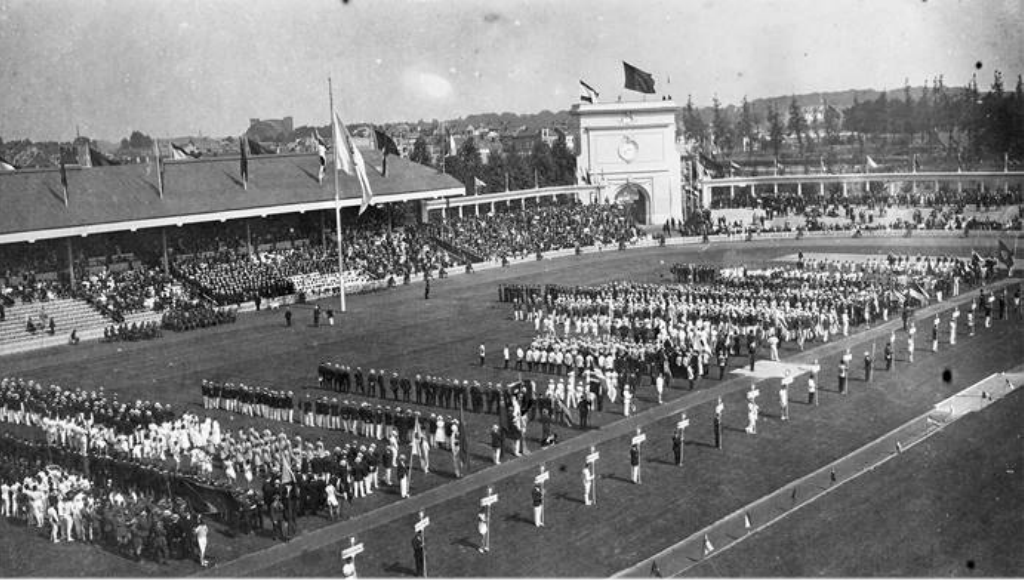
Antwerp stadium for the 1920 Olympics.
IMAGE LINKED: wikimedia Attribution 4.0 International (CC BY 4.0)
Antwerp, 1920, marked the debut of three symbols of unity, fair play and peace with the raising of the Olympic flag at the Games, the taking of the Olympic oath by an athlete, and the release of white doves.
The first two of these symbols have featured at every Olympic Games since. A bright beacon after the Great War, and the epidemic of Spanish Flu, that had decimated the population of Great Britain.
The coming together of 2,626 athletes, representing twenty-nine nations, in Antwerp for the Olympic Games, the first to be organised after the conflict, stood, and still stands as a message of peace, unity and strength.
The emergence of several enduring Olympic symbols, expressing a strong message of hope, clearly fits with this sentiment.
Today, sadly the COVID-19 pandemic delayed the 2020 Olympics in Tokyo, and may well do so in 2021.
Hardly could it have been known, with the passage of time, that Kent Lodge No. 15, with all its history, would also have such illustrious sporting connections.
History needs to be constantly updated and recorded and in 2016 Kent Lodge re-adopted its early title of ‘Royal Kent Lodge No. 15’ by the approval of the Grand Master following a decade of research into its unbroken history.
The Royal title was originally used in 1816, so named after the Duke of Kent, the Grand Master of the Antients at the time of the Union.
It fell out of use after 1820, when the Duke died. The associated Chapter likewise was permitted to change its title a year later.
With thanks to: Archivist and Records Manager, Library and Museum [FMH London]
Article by: Paul Gardner

Paul was Initiated into the Vale of Beck Lodge No 6283 (UGLE) in the Province of West Kent, England serving virtually continuously in Office and occupying the WM Chair on three occasions.
Paul joined Stability Lodge No 217 in 1997 (UGLE) and now resides with Kent Lodge No 15, (UGLE) the oldest Atholl Lodge with continuous working since 1752, where he was Secretary and now Assistant Secretary and archivist, having been WM in 2002.
In Holy Royal Arch he is active in No 15 Chapter and Treasurer of No 1601, which was the first UGLE Universities Scheme Chapter in 2015.
He was Secretary of the Association of Atholl Lodges which maintains the heritage of the remaining 124 lodges holding ‘Antients’ Warrants and has written a book on Laurence Dermott. - https://antients.org

Recent Articles: by Paul Gardner
 Exchanged the Sceptre for the Trowel Explore the intriguing history of Royals and Freemasonry following the new Monarch's Coronation. From Prince Albert's initiation to the influence of George II and beyond, discover why royalty has long exchanged the sceptre for the trowel, shaping society and maintaining power through this ancient craft. |
 Unearth the mystic origins of Freemasonry in 'That He May Be Crafted.' Paul Gardner explores the symbolic use of working tools from the earliest days of this secret society, revealing a time when only two degrees existed. Delve into this fascinating study of historical rituals and their modern relevance. |
 Paul Gardner looks to a time when politics and Masonry were not precluded, but shush! This was London Masons and the Spitalfields Act of 1773-1865. |
 That rank is but the guinea’s stamp, the man himself’s the gold. But what does this mean, even given the lyric and tone of Burns’ time? It is oft times used in a derogatory sense, (somewhat in good humour) between Masons (or not) on the achieving of honours. But its antecedents are much more complex than that. |
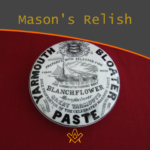 John and Timothy Coleman Blanchflower were initiated in Walpole Lodge, No. 1500, Norwich England on 2 December 1875; noted as a purveyor of ‘sauce’ to masons! |
 Jacob’s Ladder occupies a conspicuous place among the symbols of Freemasonry being on the First Degree Tracing Board, the most conspicuous and first seen by the candidate on his initiation – a vision of beauty and intrigue for the newly admitted. |
 During a detective hunt for the owner of a Masonic jewel, Paul Gardner discovered the extraordinary life of a true eccentric: Dr William Price, a Son of Wales, and a pioneer of cremation in Great Britain. Article by Paul Gardner |
 Paul Gardner tells the story of his transition from one rule book to another – from the Book of Constitutions to the Rule Book for Snooker! |
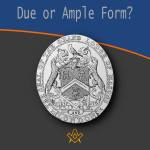 Due or Ample Form? What is ‘Ample’ form, when in lodges the term ‘Due’ form is used? |
 The Butcher, the Baker, the Candlestick Maker Paul Gardner explores the Masonic link between provincial towns’ craftsmen, shop keepers and traders in times past. Many remain in the modern era and are still to be found on the high street. |
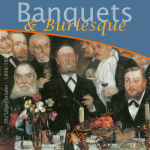 Masonic dining and banquets, at least for the annual Investitures, were lavish, and Kent Lodge No. 15, the oldest Atholl lodge with continuous working from 1752, was no exception. |
 The ‘cable-tow’ or ‘noose’ is used in Craft Masonry as part of the ritual, as are ropes and ties in other degrees - but what does it symbolise? |
 Paul Gardner reflects on those days of yore and the “gentleman footballer” in Masonry |
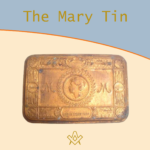 What is the Masonic connection with the 1914 Christmas Mary Tin |
 That Takes the Biscuit - The Patriot Garibaldi Giuseppe Garibaldi Italian general and politician Freemason and the Grand Master of the Grand Orient of Italy. |
 W.Bro. Paul Gardner looks at a mid 19th century artefact and ponders ‘Chairing’ |
masonic knowledge
to be a better citizen of the world
share the square with two brothers

click image to open email app on mobile device



